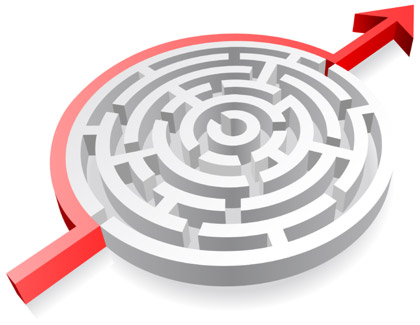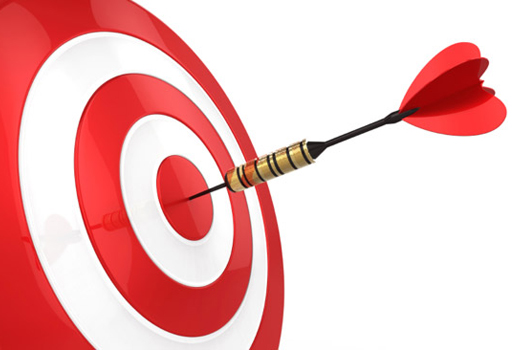Bridging the Gap Between Intention & Action
This will be a simple article. That’s because simplicity sells. As an owner of a brand engagement agency, which works with both public and private sector organizations to implement sustainability programs, I’ve found that complexity is the biggest barrier to transformational change. Program teams work within the confines of habitual processes and organizational layers to attain a firm grasp of a problem, to develop a programmatic solution and to set a target that defines success. Then they call in marketing professionals to promote the program and achieve results. This approach hurts program effectiveness by leaving the most critical element to success out until the very last minute – the people whose behavior organizations intend to change.
As I look back over the various marketing programs we’ve developed to encourage energy-saving behaviors among a range audiences – from low-income renters to owners of high-rise apartment buildings to consumers considering energy-efficient products – I see a clear and simple theme. Greater success comes when you take the time to focus in on people. Specifically, how your program will positively affect their daily lives.
Perhaps that sounds mind-numbingly obvious or at least oversimplified. But, like similar programs across the nation, initiatives we work with are born either from corporate policies or legislation, regulated by several governing bodies, packed with rigorous requirements and subject to change without notice. By their very nature, user-friendliness is not usually part of the picture. So what can you do to solve this dilemma?
You can put people first. Here’s a two-step process that can help you get started.
Step One: Take a behavioral economics-based approach to inspiring change. People know saving energy saves money and benefits the planet, yet they don’t take steps to curb energy waste. Conventional economic thinking would lead to the conclusion that everyone always acts in his or her self-interest. Therefore, messages emphasizing financial savings will lead people to adopt energy-saving behavior. The benefit of helping the environment, in those cases, is icing on the cake.
The trouble is people just aren’t that simple and predictable. In the past two decades, a new field has emerged, which seeks to sort through ambiguities of human behavior, particularly in relation to financial issues. It’s called “behavioral economics.” According to one of the field’s leading thinkers, Yale University Professor of Economics Robert J. Shiller, behavioral economics “refers to the introduction of other social sciences into economics: psychology, sociology and political science . . . bringing economics into a broader appreciation of reality.”1
A number of fantastic books exist related to behavioral economics. I’d recommend Switch: How to Change Things When Change is Hard by Chip Heath and Dan Heath. The underlying thesis of Switch is presented in a simple metaphor for human motivation: a person riding an elephant.

© iStockphoto.com/Pingebat
The idea is that inside their minds all people have a rider (their analytical, rational side) and an elephant (their emotional, intuitive side). To inspire change and action, Switch suggests a three-part thought process: Direct the rider (win minds by creating a clear vision of a positive outcome), motivate the elephant (win hearts by presenting an emotional case for behavior change) and shape the path (make the way forward as simple as possible).
There is no limit to the ways this type of thinking might be applied to an organization seeking to encourage sustainable behavior. I’ll give you an example of how we applied this thinking in our efforts to get low-income populations to take advantage of a no-cost energy efficiency program.
Directing the Rider
Our research revealed the word “free” had strong attention-grabbing power but also inspired deep skepticism. People felt if they were offered something for nothing, it would be followed by a bill for hidden costs or a sales pitch for something else. Research also uncovered insecurities in respondents’ daily lives. Forty-nine percent of low-income families had skipped paying a home energy bill; 30 percent had gone without food for a day; and 25 percent had someone in the home become sick because it was too cold.2 Using this insight, we repositioned the program as a means for people to regain more control over their homes and their lives, which just happens to be free of charge. “Free” wasn’t the point. Freedom from uncertainty – a clear vision of a better life – was.
Motivating the Elephant
Secondary research revealed the ways people use energy could reflect their perception of their social standing. Conspicuous consumption leading to energy waste is often associated with “making it” while conservation is associated with being poor. Seniors, in particular, can feel asking for help through free services means they’re incapable and belong in a nursing home. To address these barriers collectively, we developed messaging that reinforced three simple emotional motivators to get people to act: The program is really free with no strings attached; participating gives you control over your life; and not acting soon means you’re missing a great chance.
Shaping the Path
You can’t shape a path if people never start their way down it. We encountered many challenges to reaching our target population. It was difficult, impossible or too expensive to target them with traditional media, so we found a better way to meet them where they are – their cell phones. Our research showed cell phones were the target population’s primary media and Internet device. By focusing media efforts on mobile phones, we saw a dramatic spike in traffic to the program’s website – 30,000 hits in one month.
Step Two: As people engage in your program, make the process as friction free as possible. The behavioral economics-based approach to inspiring change has tremendous power to drive motivation to act. But what happens when people are ready to take the next step? The tough reality is that if it’s confusing, challenging and generally difficult to participate in something, then most people will give up. Consider this: The web analytics firm KISSmetrics reported that a four-second wait for a website to load resulted in 25 percent of users giving up and clicking away before ever viewing the site.3 Website users are even more impatient as they navigate a site. The harder it is to find clear, relevant information, the more likely they are to click to somewhere else and disregard your program entirely.
Addressing this type of friction can be difficult, but it’s well worth the effort. You can begin by auditing all of the points where people will come in contact with your program – from 1:1 support like call centers and constituency-based organizations who provide “feet on the street” to print and digital media. While looking at these program components, step back, and ask yourself questions like “can this be simpler and more clear?” Look for overly dense information, inconsistencies in messaging and spots where the transaction could or actually breaks. Also look for spots where steps can be streamlined or eliminated. Asking people to spend time navigating a website to learn if they are eligible for a program and then download, print and mail in a hard copy of their application might be deemed too difficult for some. The antidote to friction is seamlessness. So if you can find a way to cut out the stopping points and barriers to understanding, it’s a very good idea.
I’m well aware of the vast variety of organizations in this country intent on creating behavior change – and the immensity of the challenge before every single one of those actors. Whether you’re a tiny not-for-profit or a large government agency, the way forward is simple. Find a way to step away from all details, processes, data and bureaucracy and put people in the front and center of what you do. I promise you, it will make all the difference in the world.





























